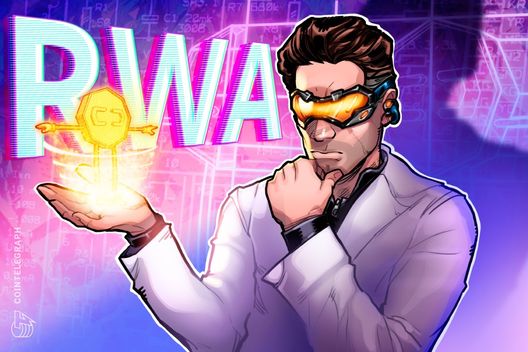
The concept of tokenizing real-world assets (RWAs) has been gaining traction in recent years, with many experts believing it has the potential to revolutionize the way we think about traditional finance. However, despite its promise, RWA tokenization has faced intense criticism and scrutiny. In this article, we will delve into the world of RWA tokenization, exploring its potential benefits and challenges, as well as the current state of the market.
Understanding RWA Tokenization
RWA tokenization refers to the process of converting traditional assets, such as real estate or bonds, into digital tokens that can be stored and traded on a blockchain. This process has the potential to increase efficiency, transparency, and accessibility in the financial markets. However, critics argue that decentralization alone is not enough, and that the complexity and regulatory hurdles associated with RWA tokenization make it a non-viable solution.
Despite these criticisms, significant progress has been made in the development of compliant, high-level RWA systems. These systems have the potential to bridge the global financial divide, particularly when it comes to government bonds and real estate. International investors are no longer limited by the shortcomings of traditional paper-based contracts, and the use of blockchain technology has increased transparency and reduced the risk of fraud and manipulation.
Market Growth and Adoption
The market for RWA tokenization is growing rapidly, with the stablecoin market alone valued at over $260 billion. This demonstrates a strong demand for RWA tokenization and a huge market opportunity. Despite the criticisms, the use of RWA tokenization is becoming increasingly mainstream, with traditional financial partners and markets beginning to take notice.
Recent developments, such as the implementation of the Guiding and Establishing National Innovation for US Stablecoins Act (GENIUS Act) in the USA, have provided a clear signal that defined regulations can ensure more legitimacy. The EU regulation on markets for crypto assets will come into force gradually until 2025, setting clear, comprehensive rules for the issuance of tokens, asset-backed tokens, and stablecoins in all 27 member states.
Regulatory Frameworks and Infrastructure
The development of robust regulatory frameworks and carefully designed tokenomics is crucial for the growth and adoption of RWA tokenization. These frameworks must balance incentives with sustainable growth, and integrate existing laws to prevent failure. The creation of standardized compliance templates with limited liability structures and fast cross-border compliance paths is also essential.
Onchain “Know Your Customer”, anti-money laundering, identity management, and institutional infrastructure for custody, settlement, and reliable valuation are all key components being developed and launched. The implementation of these frameworks and infrastructure will help to increase trust and confidence in the market, and provide a solid foundation for the growth of RWA tokenization.
Conclusion
In conclusion, RWA tokenization has the potential to revolutionize the way we think about traditional finance. Despite the criticisms and challenges, significant progress has been made in the development of compliant, high-level RWA systems. The market is growing rapidly, and recent developments have provided a clear signal that defined regulations can ensure more legitimacy. As the market continues to grow and evolve, it is essential that regulatory frameworks and infrastructure are developed to support it. With the right frameworks and infrastructure in place, RWA tokenization has the potential to become a mainstream phenomenon, increasing efficiency, transparency, and accessibility in the financial markets.
For more information on RWA tokenization and its potential impact on traditional finance, visit https://cointelegraph.com/news/tokenization-institutions.

